Two days after seeing Lydia Lunch perform spoken word at Bar Covell, I attended the preview night of Photomatica’s Photo Booth Museum in Silverlake. I’ll take Elder Millennial for 600, Alex.
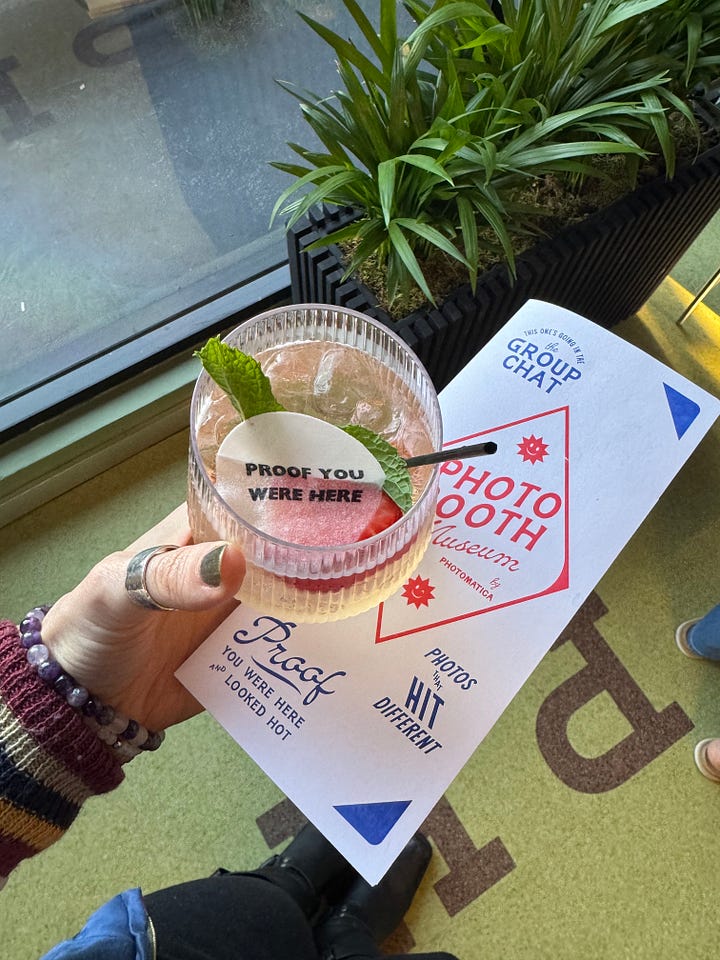
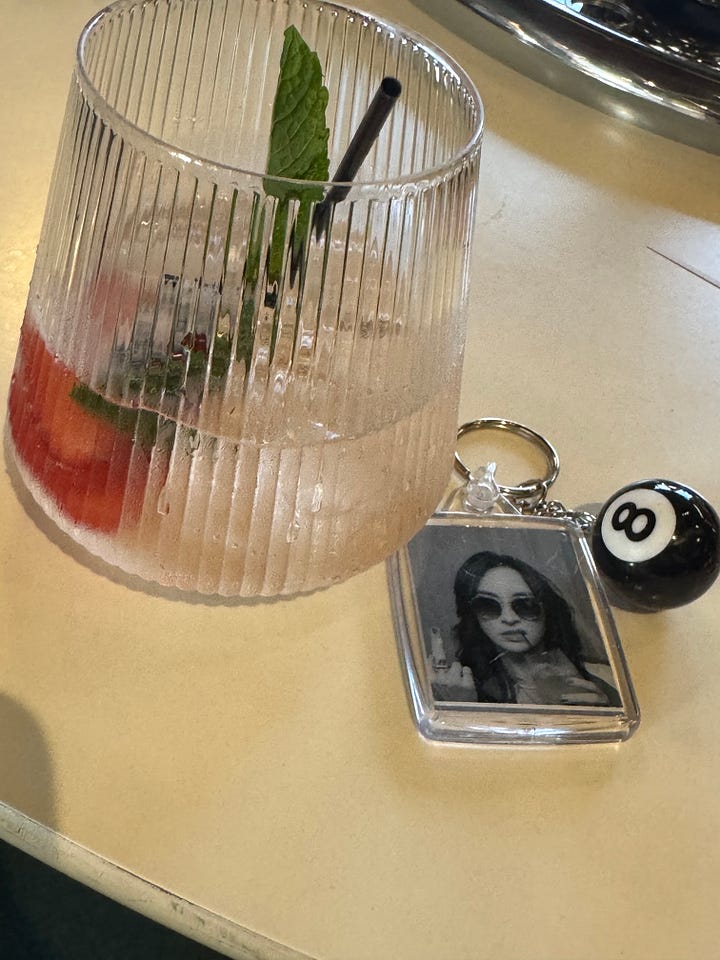
A half hour into the event, the place was already packed. Everyone in L.A. loves to have their picture taken, and the young influencers in meticulous Y2K cosplay were no exception. There is a certain irony in the invitation to create digital media out of an analog experience, but what choice do we have in this economy? By the ticket, take the ride.
The space is beautifully curated; 5 photo booths spanning the decades from the 1950s to today, only one of them digital, each with an educational blurb on the improvements to instant photo technology that make each of them unique from the other. There are drying stations tucked among the mid-century seating if you can’t wait for the developing fluid to evaporate unassisted1.
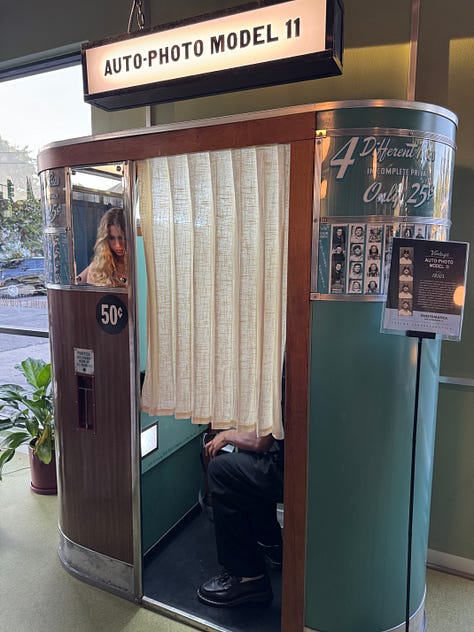
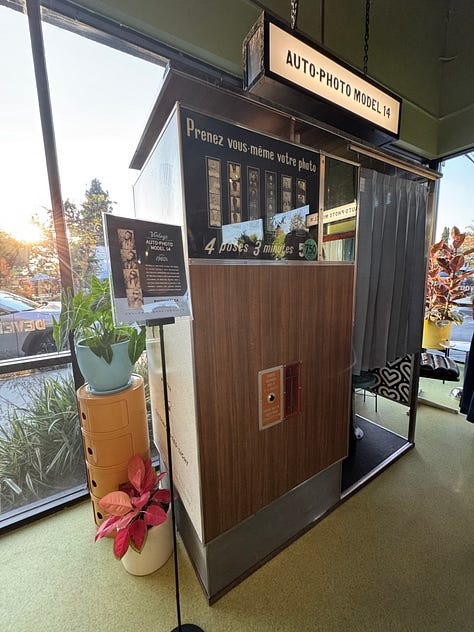
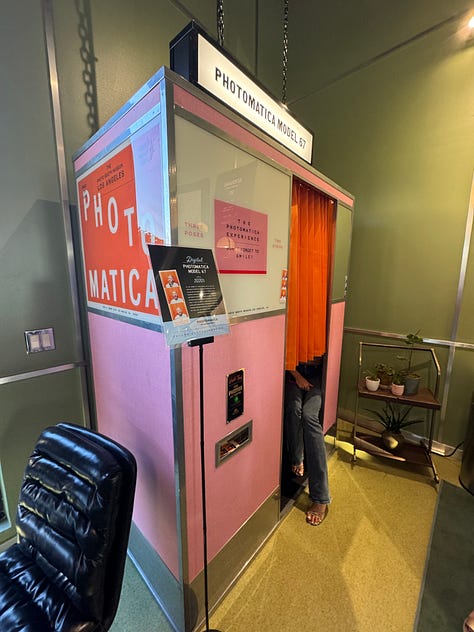
It is an almost universally agreed upon adage that good things take time. In an increasingly impatient society, how quaint that we are willing to wait upwards of 3 minutes for something our phones can do instantly2; though our phones can’t create the urgency of nailing four poses before each flash, or the anticipation of standing by the dispenser and hoping for the best. The charm of the photo booth experience is the physical souvenir of the encounter, inherently anti-digital, to be treasured on your fridge or in a bankers box (like my stack from the last 15 years of bon vivancy).
Renaissances of analog media spring up like lo-fi rebellions against every new advancement in automation. Take for example the vinyl boom that erupted with the onset of digital streaming platforms, or how as photo resolution becomes even clearer, a revival of the early aughts point-and-shoot camera has blossomed. The sight of a photo booth in a bar is a cheap and cheerful delight, and even a great indicator if you’re with the right people depending on your willingness to pile in behind the curtain. I can never resist a photo booth. Even the crappy one at the LA Zoo. At every new horizon, we look back at yesterday.
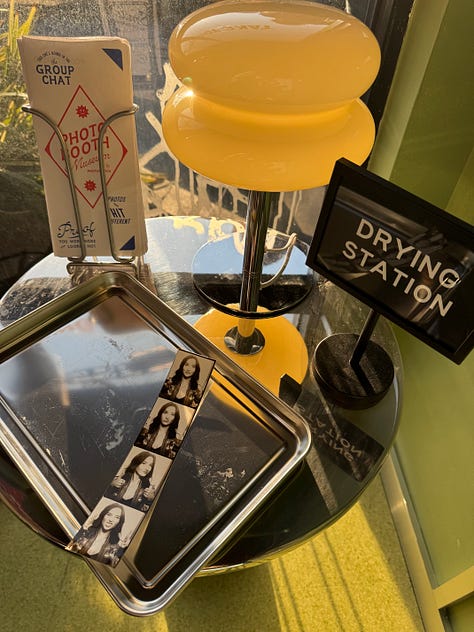
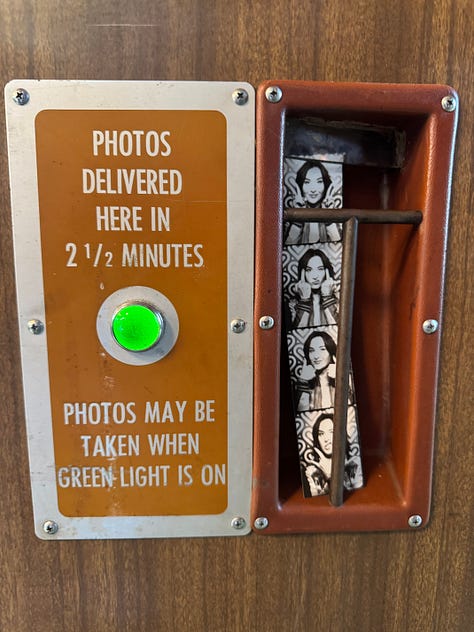
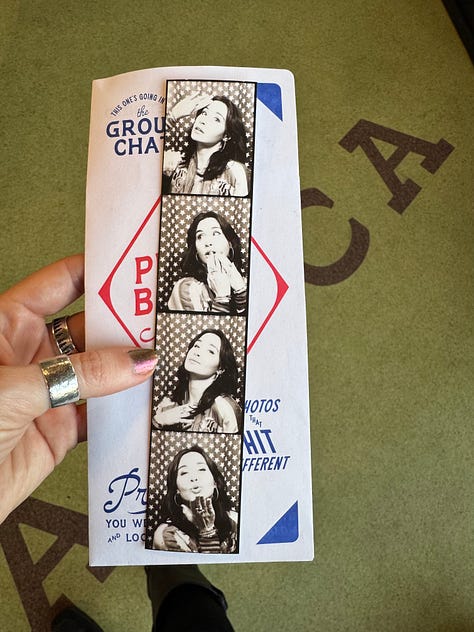
Right before I turned 21, I took a solo mental health trip up to Seattle armed with a Polaroid camera I’d picked up at a garage sale. Some of the photos I took on that trip were published in a journal called Fading from Memory by the Film Shooters Collective. It was the beginning of a brief flirtation with analog photography that included the White Stripes Holga (sourced on eBay), and Diana F+ (impulse purchased at the Rodin Museum in Paris). I filled vintage albums with square prints of friends and lovers and animals of all kinds. A first generation Fuji Instax, the Impossible Project’s stylish revival of Polaroid products, all of these I eventually sold off in a self imposed hipster death. Why go to all this trouble when we’re shackled to a device that does it all anyway?
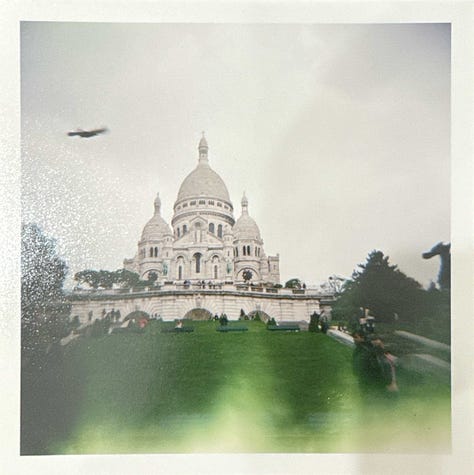
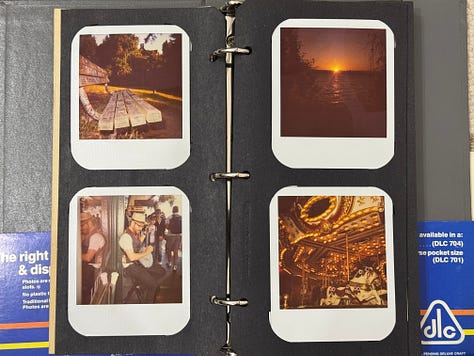

Most recently, at a bowling social organized by a friend, I brought the little Polaroid Go I purchased on a whim during the pandemic. It was a hit, even as the film was so expired it hardly developed in the low light of the bowling alley. Thus I remembered why I indulged in all of this in the first place: whimsy is comforting. The world burns and AI consumes us all, but for a couple bucks, here’s a tangible “say cheese”.
Of course I felt the impulse to create a carousel of stills from my evening at the Photo Booth Museum, as I imagine was expected of an invited guest on the media list at preview night. The sooner it’s on Instagram, the faster I can say I was there first. But much like the photo strips themselves, my thoughts needed time to develop. I think of the restoration of Los Angeles cinemas, like Vidiots, the New Beverly, and the Vista Theatre, the joy they bring to those who relish vintage media. Third places that preserve our sense of wonder are vital; it’s all about how you frame it.
I heard at least one attendee wonder aloud why the strip was wet.
I heard another attendee puzzle at how long the strip took to dispense, and why only one copy.





